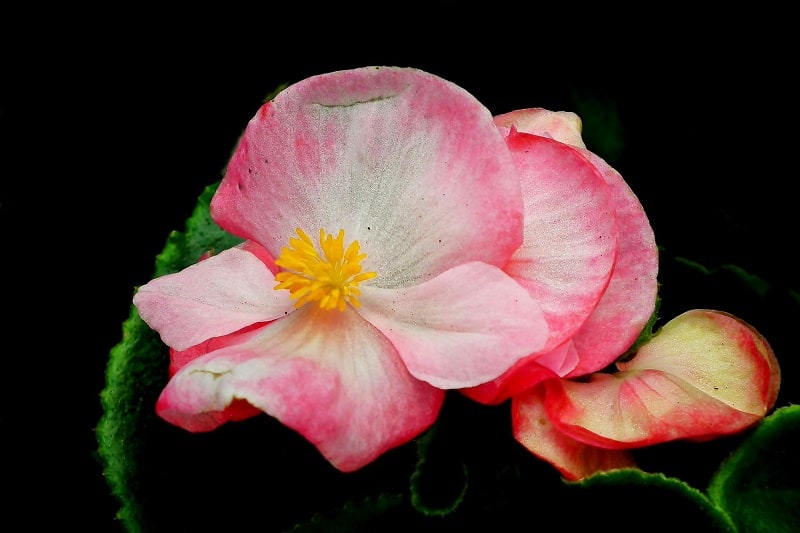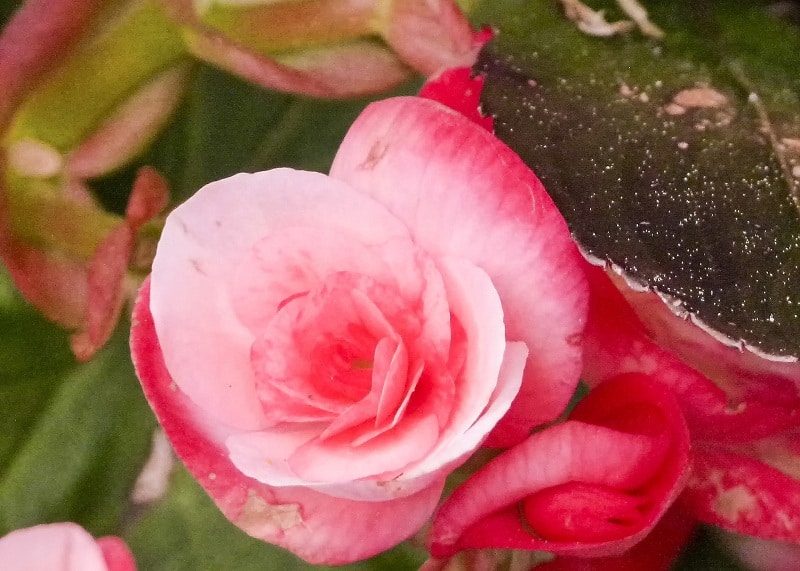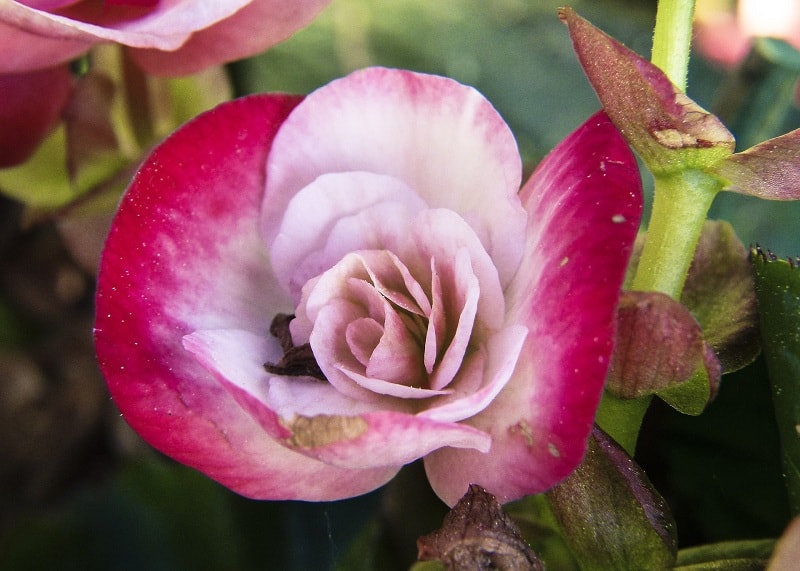Wax begonias are one of the most popular flowers for both indoor and outdoor gardens. They are easy to care for and come in a wide range of colors.
The plant is a great choice for gardeners of all levels of experience. They are easy to care for and come in a wide range of colors. Whether you are looking for a plant for your indoor or outdoor garden, wax begonias are a great option.
Begonia wax is available in many different colors, including pink, red, white, and orange. The plant is a versatile plant that can be used in a number of different ways in the garden.
| Name | Wax begonia |
| Botanical Name | Begonia semperflorens |
| Plant Type | Perennial or annual |
| Light | Full sun to partial shade |
| Bloom Time | Summer |
| Flower Color | Red, pink, or white |
| Native Area | Central and South America |
How to Grow Wax Begonias
To grow a wax begonia, plant in well-drained, moist soil in a spot that gets partial sun. Begonias thrive in humid conditions, so mist the leaves regularly. fertilize the begonia every two weeks with half-strength fertilizer. They are susceptible to root rot, so make sure the soil is well-drained.
How to Care Wax begonias
If you want your wax begonias to thrive, there are a few things you need to do in terms of care. First, make sure they are planted in well-draining soil. Plants do not like to sit in wet soil, so make sure the soil is not too dense and that it drains well. Second, water your wax begonias regularly. They like to be kept moist, but not soggy. Allow the top inch or so of soil to dry out between watering. Third, fertilize your wax begonias regularly.

Use a balanced fertilizer and apply it every two to four weeks. Fourth, if you live in a colder climate, you may need to bring your wax begonias indoors for the winter. They prefer warmer temperatures and will not do well in cold weather. Keep them in a bright spot and water them as needed.
Light
Light Wax begonias are perfect for shady areas in your garden. They have large, showy flowers that come in a variety of colors. The plant is easy to care for and is very low maintenance.
Soil
Wax begonias prefer soil that is loose and well-drained. They do not like to sit in wet, mucky soil, so make sure the area you plant them in has good drainage. You can improve drainage in your garden by adding organic matter to the soil or by planting them in raised beds.
Water
Water begonias need evenly moist soil, so water them regularly and mist the leaves to prevent the plant from drying out. If the soil is too dry, the leaves will begin to Droop. Wax begonias prefer shady areas and need to be watered more frequently than other types of begonias.
Temperature
The optimal temperature range for wax begonias is between 60 and 70 degrees Fahrenheit. They will tolerate slightly cooler or warmer temperatures, but their growth may be stunted or they may drop their leaves if the temperature gets too extreme.
Humidity
Wax begonias thrive in humid environments. These plants enjoy being moist, so they require regular watering and do their best in high humidity. Place them in a spot with bright, indirect sunlight for best results.
Fertilizer
Fertilizing wax begonias is important to maintain their health and vigor. Use a well-balanced fertilizer formulated for flowering plants and apply it according to package directions. Fertilize wax begonias every two to four weeks during the growing season.
Propagating Wax Begonia
Wax begonias are easy to propagate from stem cuttings. You can take cuttings any time during the growing season. The best time to take them, though, is in early summer when the stems are relatively soft.
- To propagate wax begonias, take stem cuttings any time during the growing season.
- The best time to take cuttings is in early summer when the stems are relatively soft.
- Cut the stem at a 45-degree angle, just below a leaf node.
- Dip the cut end of the stem in rooting hormone.
- Plant the stem in a pot filled with moistened potting mix.
- Cover the pot with a clear plastic bag to create a humid environment.
- Place the pot in a location that receives indirect light.
- Keep the potting mix moist but not soggy.
- After a few weeks, the stem should produce new roots and can be transplanted into a larger pot.

Growing Wax Begonias From Seed
Wax begonias are one of the easiest flowers to grow from seed. You can start them indoors or outdoors, and they will bloom in as little as eight weeks. Here are some tips on how to grow wax begonias from seed:
- Start with fresh seed. Not all seed is viable, so it is best to start with fresh seed from a reputable source.
- Sow the seed in a sterile, well-draining potting mix.
- Place the pot in a warm, sunny location.
- Keep the soil moist, but not soggy.
- When the seedlings emerge, thin them so that they are spaced about 4 inches apart.
- Transplant the seedlings into individual pots when they are about 4 inches tall.
- Fertilize the seedlings monthly with a weak solution of liquid fertilizer.
- Acclimate the seedlings to outdoor conditions by gradually exposing them to more sun and wind over a period of two weeks.
- plant the seedlings in the garden in the spring, after all, the danger of frost has passed.
Types of Wax Begonias
- regular begonia – this type has round, fleshy leaves and comes in many colors including green, bronze, and red. They typically grow to be about 12 inches tall and bloom from mid-summer to fall.
- wax begonia – this type has smaller, thinner leaves that are often green or bronze. They typically only grow to be about 6 inches tall and bloom from mid-summer to fall.
- semperflorens begonia – this type has small, oval-shaped leaves that are green or bronze. They typically only grow to be about 6 inches tall and bloom from mid-summer to fall.
Pruning
To keep your wax begonias looking their best, it’s important to prune them regularly. Pruning not only encourages new growth but also helps to keep the plant compact and tidy. Wax begonias can be pruned either by hand or with a pair of secateurs. If pruning by hand, simply remove any dead or damaged leaves and stems.
If using secateurs, make sure to sterilize them first to avoid spreading the disease. When pruning, it’s best to err on the side of caution – it’s always easier to remove more later if needed than it is to try and fix a plant that’s been over-pruned.
When the seedlings emerge, thin them out so that only the strongest one remains in each pot. Once they’ve grown to be about 4 inches tall, transplant the seedlings into individual pots filled with potting soil. Water your begonias regularly and fertilize them monthly to help them grow strong and healthy.
Being Grown in Containers
Wax begonias can be easily grown in containers and make excellent houseplants. They thrive in bright indirect light and prefer to be kept on the drier side.
Allow the soil to dry out completely between watering and be sure to empty any water that collects in the saucer beneath the pot. Plants are not heavy feeders, so fertilize sparingly. A half-strength solution applied every other week is usually sufficient.
Potting and repotting Wax begonia
Potting and repotting Wax begonia can be done by following these simple steps. First, remove the plant from its current pot and check the roots to see if they are crowded. If they are, then gently loosen them up before proceeding to the next step.
Next, choose a new pot that is only slightly larger than the current one and has drainage holes in the bottom. Fill the new pot with fresh potting mix, then carefully transfer the wax begonia into it. Once it is in the new pot, water it thoroughly and wait for the excess water to drain out before placing it in its new location.
Overwintering
Looking to add a touch of color to your winter landscape? Overwintering wax begonias are a beautiful option. With their shiny green leaves and bright blooms, these hardy plants can add a splash of color to any garden. While they are typically grown as annuals, with a little extra care, they can be overwintered indoors and brought back out in the spring. Here are a few tips on how to overwinter your wax begonias:
- Place your plants in a bright location indoors. A south-facing window is ideal.
- Water regularly, keeping the soil moist but not soggy.
- Fertilize every few weeks with a half-strength solution of a balanced fertilizer.
- Pinch back the stems to encourage bushier growth.
- When the weather warms up in the spring, slowly acclimate your wax begonias to the outdoors before planting them in the garden.
With a little extra care, you can overwinter your wax begonias and enjoy their beauty for many seasons to come.
Common Pests
There are a few common pests that can affect wax begonias, including aphids, mealybugs, and whiteflies. These pests can cause problems by eating the leaves of the plant, which can lead to yellowing and even death. If you notice any of these pests on your plant, it’s important to take action immediately to get rid of them.
common diseases
Some common diseases that can affect wax begonias include powdery mildew, root rot, and leaf spot. Powdery mildew is a white or gray powdery fungus that can cover the leaves of the plant. Root rot is caused by too much water and can cause the plant’s roots to rot. A leaf spot is a brown or black spot that can appear on the leaves of the plant.
How to Get Wax begonias to Bloom
it is important to understand their flowering needs. Wax begonias bloom in response to the amount of light they receive. If they do not receive enough light, they will not bloom. Another factor that affects bloom is the temperature. Wax begonias will not bloom in temperatures that are too hot or too cold. They need to be in a temperature range of 60-70 degrees Fahrenheit to bloom.
Common Problems
While wax begonias are generally easy to care for, there are a few common problems that can occur. Below is a step-by-step guide to help you prevent and resolve these issues.
- Overwatering. One of the most common problems with wax begonias is overwatering. Begonias are delicate plants and too much water can cause the leaves to yellow and drop off. Water only when the top inch of soil is dry and be sure to drainage holes in the pot.
- Under watering. Another common issue is underwatering. This can cause the leaves to wilt and the flowers to drop off. Be sure to water begonias regularly, especially during hot weather.
- Pests. Wax begonias are also susceptible to pests, such as aphids, mealybugs, and whiteflies. These pests can be controlled with regular spraying of an insecticide.
- Diseases. Wax begonia can also be affected by diseases, such as powdery mildew and root rot. These can be controlled with the use of fungicides.
By following these steps, you can help prevent common problems with This plant.
FAQ
Do wax begonias come back every year?
Whether or not wax begonias come back every year depends on the climate and care they receive. In general, they do not winter hardy and need to be brought indoors or treated as annuals in colder climates. With proper care, they can be overwintered and will come back the following year.
Do wax begonias spread?
Wax begonias will spread if you allow them to. They can produce rhizomes that will grow new plants. These new plants can be transplanted to other areas of your garden.
Where is the best place to put begonias?
The best place to put begonias is in a well-lit location with indirect sunlight. Begonias also prefer a humid environment, so putting them in a bathroom or near a humidifier is a good option.

